Abundance: common
What: leaves, dried fruit
How: chew a small bit of leaf to numb mouth/lips, use dried fruit Sichuan seasoning
Where: shaded woods
When: whenever leaves are present
Nutritional Value: medicinal, antioxidants
Other uses: Hit people with spiny club made from trunk
Dangers: Slightly toxic, do not swallow leaves or bark
Medicinal Summary:
Bark, Leaves, Berries - oral anesthetic (poultice)
Bark - sweat inducer (tincture)
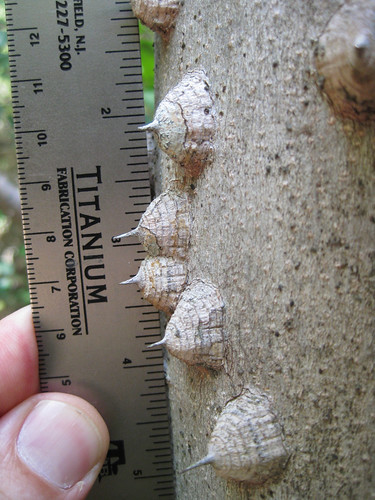

Mature tree trunk of Zanthoxylum clava-herculis.
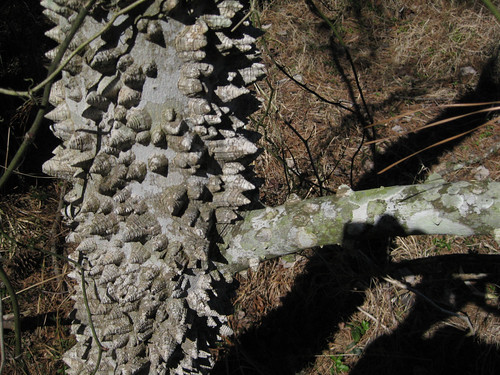
Compound leaf of Prickly Ash.
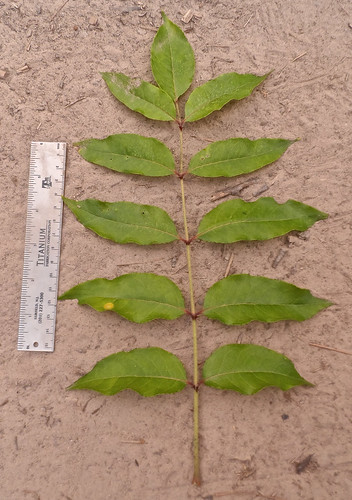
Note the thorns at each leaf-node as well as other random spots.
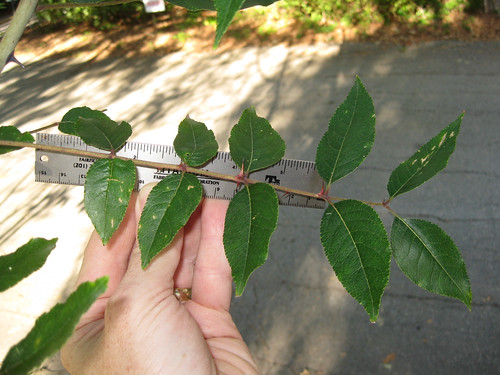
Close-up of a single leaflet.
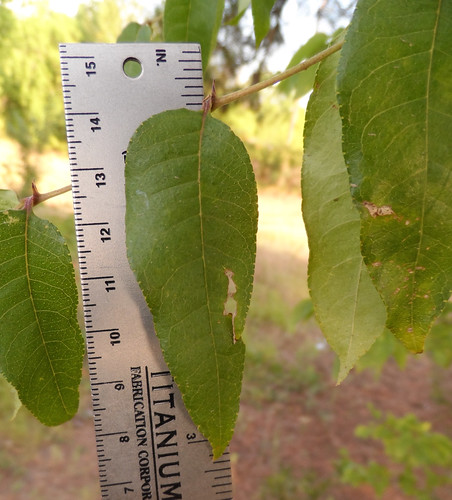
Young berries (springtime).
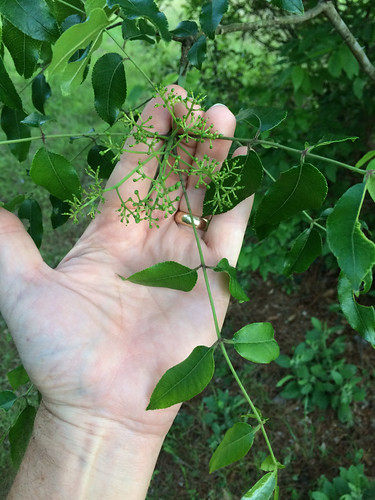
Almost mature berries (mid-summer).
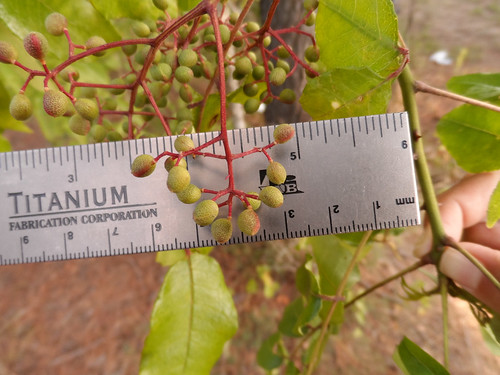
Ripe berries ejecting seeds. (mid-summer)
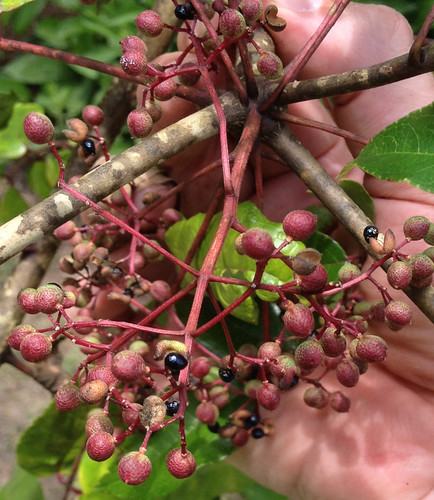
Empty seed husks. (late summer)

Seed husks in winter.
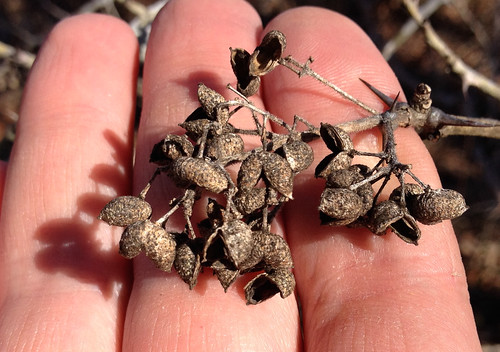
Bare tree in winter.
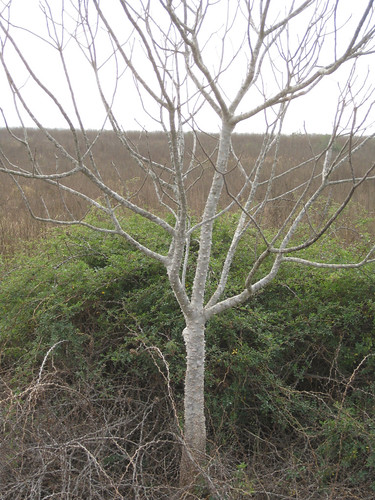
Young, new leaves budding in spring.

Texas distribution, attributed to U. S. Department of Agriculture. The marked counties are guidelines only. Plants may appear in other counties, especially if used in landscaping.
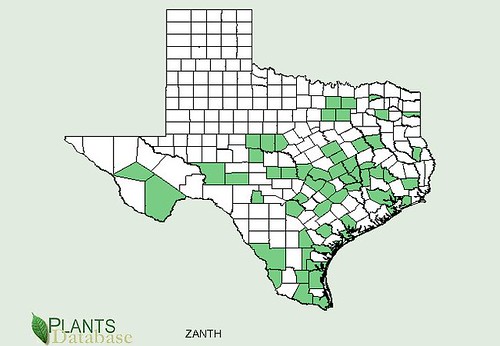
North American distribution, attributed to U. S. Department of Agriculture.
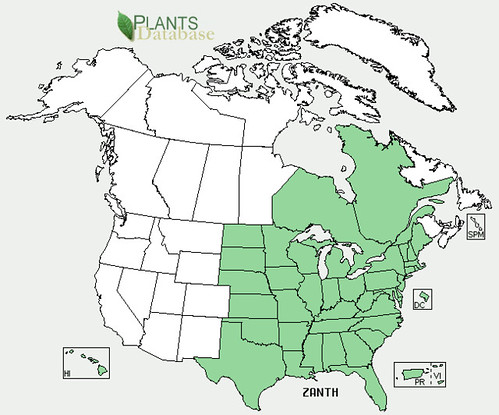
Prickly Ash trees are found not just in Texas but also worldwide. Here in North America they go by names such as Hercule's Club, Tickle-Tongue tree, and Toothache tree. It's very common to see these trees along fence line because ranchers would plant them there because cattle don't like rubbing against them, so it would protect the fences. In more modern times these trees appear along fences lines thanks to seeds in bird poop.
The leaves and bark of these trees contains a fairly strong anesthetic. Native Americans would cut off one of the thorns and place it on the gum near their hurting tooth. After a few minutes that area would go numb, allowing a friend to yank the bad tooth out. Pioneers and early Texas settlers would use the leaves instead of the bark/spines. I have no idea why one people used one part and other people used a different part for the same treatment.
These trees produce a massive amount of bright red berries in the fall. In China the dried, roasted berries of similar species of Zanthoxylums are used as the main ingredient of Sichuan seasoning. Pick the ripe berries and let them dry until they split open revealing dark seeds. Remove the seeds and coarse-grind the husks for use in many Chinese recipes. The husks can also by dry-roasted in a frying pan to give a richer, somewhat smokey flavor. The numbing aspect of the berries tempers their spiciness into a unique flavor. I like mixing these ground husks with Texas hot sauces to create Texas Sichuan sauces.
Buy my book! Outdoor Adventure Guides Foraging covers 70 of North America's tastiest and easy to find wild edibles shown with the same big pictures as here on the Foraging Texas website.

